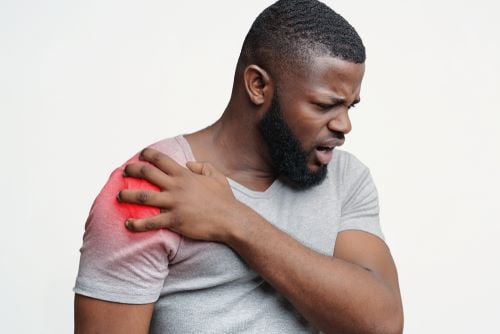We’ve seen our fair share of accident victims with various injury types at our Georgia Injury Centers. However, out of all the wounds people sustain from accidents, the most affected area is the musculoskeletal system. These cover injuries to the bones, joints, muscles, tendons, and ligaments.
In this article, we shed light on the musculoskeletal system, pain, and treatment options. If you get into an accident that affects the muscles and bones, our Georgia Injury Centers have a team of specialists available 24/7 to help you. We also have an ambulance service that will convey you to and from our injury centers.
What Is the Musculoskeletal System?
The musculoskeletal system (locomotor system) is the human body system that provides movement, stability, shape, and support. It is subdivided into two broad categories, namely:
- Muscular System: It includes all muscle types, but skeletal muscles in particular. Skeletal muscles act on the body joints to produce movements. Beyond muscles, the muscular system also contains tendons that attach the muscles to the bones.
- Skeletal System: The main component is bone. These bones articulate and form the joints, giving the body a hard-core yet mobile skeleton. In turn, the bones are supported by the accessory structure of the articular cartilage, ligaments, and bursae.
Aside from the functions of the musculoskeletal system mentioned above, it also provides the body with protection and helps with heat generation. It also plays a crucial role in homeostatic functions like storing minerals, e.g., calcium and hematopoiesis. In addition, the muscular system keeps the majority of the body’s carbohydrates in glycogen form.
What Is Musculoskeletal Pain?
Musculoskeletal pain affects the muscles, bones, ligaments, tendons, and nerves. Sometimes, you feel the pain in just one part of your body, like your back. However, if you have a medical condition like fibromyalgia, the pain may be throughout your body. The preceding is also the same when an accident causes a break in the bone or muscle, ligament, or tendon tear.
Musculoskeletal pain can range from mild to severe, and if left untreated, can interfere with a person’s day-to-day life. If a medical condition causes acute pain, you may experience it suddenly, which would be short-lived. However, if the pain lasts longer than three to six months, it would be chronic pain.
The most common types of musculoskeletal pain include:
- Bone pain from injuries like bone fractures; sometimes, a tumor may cause this pain.
- Joint pain is usually accompanied by stiffness and inflammation. This pain gets better with rest but worsens with activity.
- Muscle pain like spasms, cramps, and injuries like a tear.
- Tendon and ligament pain like strains or sprains from accidents or overuse.
- Nerve compression when a medical condition put pressure on the nerves
Common causes of musculoskeletal pain include but are not limited to the following:
- Bone fractures
- Join dislocation when something forces the joint out of place
- Direct blows to the muscles, bones, or joints
- Overuse injuries
- Poor posture
- Sprains
Common symptoms of musculoskeletal pain are:
- Stiffness
- Soreness
- Swelling
- Weakness
- Fatigue
- Redness
- Difficulty sleeping
- Cracking or popping sound in the joint
- Muscle spasm or twitches
- Trouble moving the affected area
- Bruising
How Do You Treat Musculoskeletal Injuries?
If you injure the musculoskeletal system, you can receive treatment from your primary care physician (PCP). You can also receive treatment from specialists, including physical therapists, rheumatologists, osteopaths, and orthopedics. The treatment you can get depends on the cause of your pain, whether it’s from an accident or a medical condition.
Below, we break down the possible treatment types:
- Medications like pain relievers and nonsteroidal anti-inflammatory drugs
- Hands-on therapy like therapeutic massage, chiropractic/osteopathic manipulation, and physical therapy
- Alternative therapies like acupuncture, herbal, vitamin, and mineral supplements
- Aids and devices like orthotics, braces, cervical collars, taping, and lumbar supports
- Surgery for cases that do not improve with conservative treatment. The standard procedures include joint replacement, laminectomy, soft tissue and cartilage repair, and arthroscopy.
Furthermore, ice and heat are good options for soothing pain. Ice reduces swelling and relieves pain immediately after an injury. Lastly, you can talk to someone about your pain and learn cognitive behavioral therapy (CBT) to manage your pain effectively.
Contact Us Today!
At Georgia Injury Centers, we handle all kinds of musculoskeletal injuries and pain. We have specialists who will offer you personalized treatment and set you on your way to recovery. In addition, if an accident caused your injury, we have an excellent attorney referral service that will help you get the compensation that would cover your medical bills. Contact us today to schedule a free consultation.








